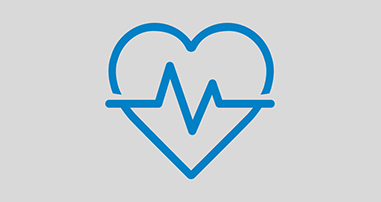Transposition of the great arteries (TGA) is a complex congenital heart defect, meaning it is present at birth.
The “great arteries” refer to the aorta and pulmonary artery, which are major arteries that carry blood away from the heart. In children who have TGA, these arteries are connected abnormally to the heart. The aorta is connected to the right ventricle when it should be connected to the left ventricle. The pulmonary artery is connected to the left ventricle when it should be connected to the right ventricle. When this happens, oxygen-poor (blue) blood is sent to the body instead of the lungs, and oxygen-rich (red) blood is returned to the lungs instead of being sent to the body.
TGA can be diagnosed before your child is born using a fetal echocardiogram or ultrasound. The Fetal Cardiology Program team at the Children’s Healthcare of Atlanta Heart Center can help develop a delivery plan and care for your baby immediately after he is born.
TGA can also be diagnosed when an infant is a few hours or days old if displaying certain symptoms, such as a blue or purple tint to the lips, skin and nails. Less commonly, infants may not have visible symptoms for weeks or months.
Your doctor may also use the following tests to examine your child’s heart:
Symptoms of TGA may include:
- Blue or purple tint to lips, skin and nails
- Rapid breathing
- Difficulty feeding
- Poor appetite
- Poor weight gain
Children with TGA will need to have a surgery called the arterial switch operation to change their blood flow so that oxygen-poor blood goes to your child’s lungs and oxygen-rich blood goes to his body.
Newborns with TGA who have low oxygen levels may require a cardiac catheterization procedure called balloon atrial septostomy (BAS), which takes place hours after birth. This procedure uses a balloon at the end of a small, flexible tube, or catheter, to create or enlarge a hole between the upper chambers of the heart to allow red and blue blood to mix. Open heart surgery will then take place a few days later.
What is the future like for a child born with transposition of the great arteries?
Most children who have surgery for TGA are likely to grow and develop normally. Your child will still need to see his pediatric cardiologist for regular checkups, and he may need additional surgeries or catheterizations in the future. Your child’s pediatric cardiologist can offer advice about which activities are safe for him.
Transposition of the Great Arteries
-
Transposition of the Great Arteries (TGA) and Surgeries
Watch us explain TGA and the procedures our team performs to help correct these hearts: arterial switch operation and balloon atrial septostomy.

Questions to ask during a fetal echocardiogram
A fetal echocardiogram is an imaging test that allows a doctor to observe the structure of an unborn baby’s heart for any potential heart conditions. Learn what to ask the doctor about your baby's heart during this test.
read moreAdvancements and Innovation in Pediatric Heart Care
The Children’s cardiothoracic surgery team is dedicated to the well-being and care of children of all ages—from birth to 21—who have been diagnosed with a congenital heart defect.
Cardiothoracic surgeons
- Paul Chai, MD, Co-Chief, Heart Center; Chief, Cardiothoracic Surgery
- Joshua Rosenblum, MD, PhD
- Subhadra Shashidharan, MD
- Fawwaz Shaw, MD
- Kimberly J. Woodall, CPNP
- Melanie McBrayer, CPNP
Resources for Heart Families
Contact Us 404-256-2593





